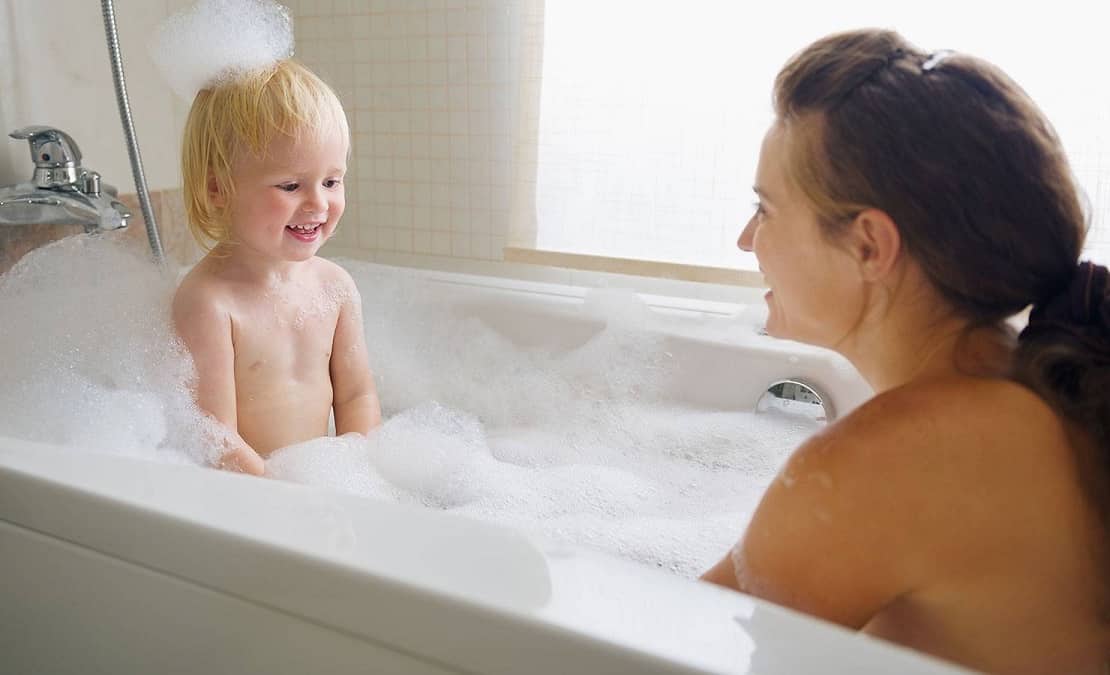Bathing With Kids – What Parents Should Know

If the kid you\’re caring for is 2 or 12, bath time comes with things to bear in mind. If you\’re babysitting or nannying at night, make sure you share information beforehand with the parents about the kid\’s tub time routine to know what to expect and what to try to avoid.
Bath with Newborns
Newborns are not ready for a bath, even one in the sink, till their umbilical-cord stump has fallen off. Until then, you should sponge bathe them every day, paying particular attention to their underarms, hands, skin folds, and bottoms. Only use a damp cloth and plain water while they\’re newborns. It would help if you started the bath routine after they lose their cord stumps.
You only need to give your baby a whole-body bath a couple of times a week; some of the critical things to keep in mind are:
- The first and most important rule is this: never, ever leave your infant or toddler, even for a minute, unattended. In less than an inch deep, infants can drown. So, before you start, collect all the supplies you will need (soap, towels, clean diapers, clean clothes, etc.). Always hold your baby with at least one hand while he\’s in the water. Scoop your baby in a towel and take him with you if the doorbell or phone rings and you feel you have to answer it.
- Ensure that the bathroom is warm and cozy (around 75 degrees F or 25 degrees C), as babies can get cold quickly.
- When the water is still running, don\’t put your infant or toddler into a pool. (The temperature of the water might change, or the water could get too deep. For some infants, the sound of rushing water can also be too intense.)
- Bathtubs can be incredibly slippery, so dress yours for more comfortable seating with a rubber bath pad. A cushioned spout cover or hand towel that is strategically covered will defend against painful bumps. Also, make sure the safety glass is made on any sliding glass shower doors.
- Make the bathwater warm comfortably. To ensure it\’s not too hot, measure it with your wrist or the inside of your elbow. A much cooler tub is commonly favored by babies and toddlers than you probably do.
- Fill the tub with just 2 to 4 inches of baby water and not more than waist-high for infants and kids while sitting.
- Teach your child that they should not stand in the tub.
- If you want to, wash your little one in water as long as you clean the diaper region and the skin folds nicely. Baby-soft skin can be dried out by soaps and shampoos and can cause rashes. Choose a gentle one tailored for newborns, and use it sparingly. Play at the beginning of the bath and save the soap and shampoo until the end to avoid making your child stay too long in soapy water.
Bath with Babies and Toddlers
Babies and Toddlers slowly switch from the sink or baby tub to the standard bathtub. Place the child gently in the water, dropping their feet first. To calm them, talk to them in long, low tones. Gently cleanse their face and hair once they are in, making sure to keep soap out of their eyes by carefully putting your hand over their forehead.
Bath with Preschoolers
Your child might wash their own body when they reach school age, but will certainly also need help with their hair. As they get more relaxed, let them take over more and more, but continue supervising them until they are mature enough to pick themselves up if they go under the water. Ensure that you review the procedure with parents if the older child is opposite to you in gender. The parent may have suggestions or privacy advice that will help them feel more secure for both you and the child.
At what age should you stop bathing with your Child?
It is important to note that bathing with your children has to stop at some point as they are continually learning and are evolving by the day. It\’s a common belief that parents-kids bath times should stop when the child is around 2 years as at this stage of their life they become very intuitive. Although it can be quite hard as the parent-child bond is usually established at bath times like this, endeavor to cover up adequately, especially if the child is of the opposite sex.
Conclusion
Bath time is a fantastic time to bond with children. Baths can be just as safe and pleasant as any other activity with a little planning.







